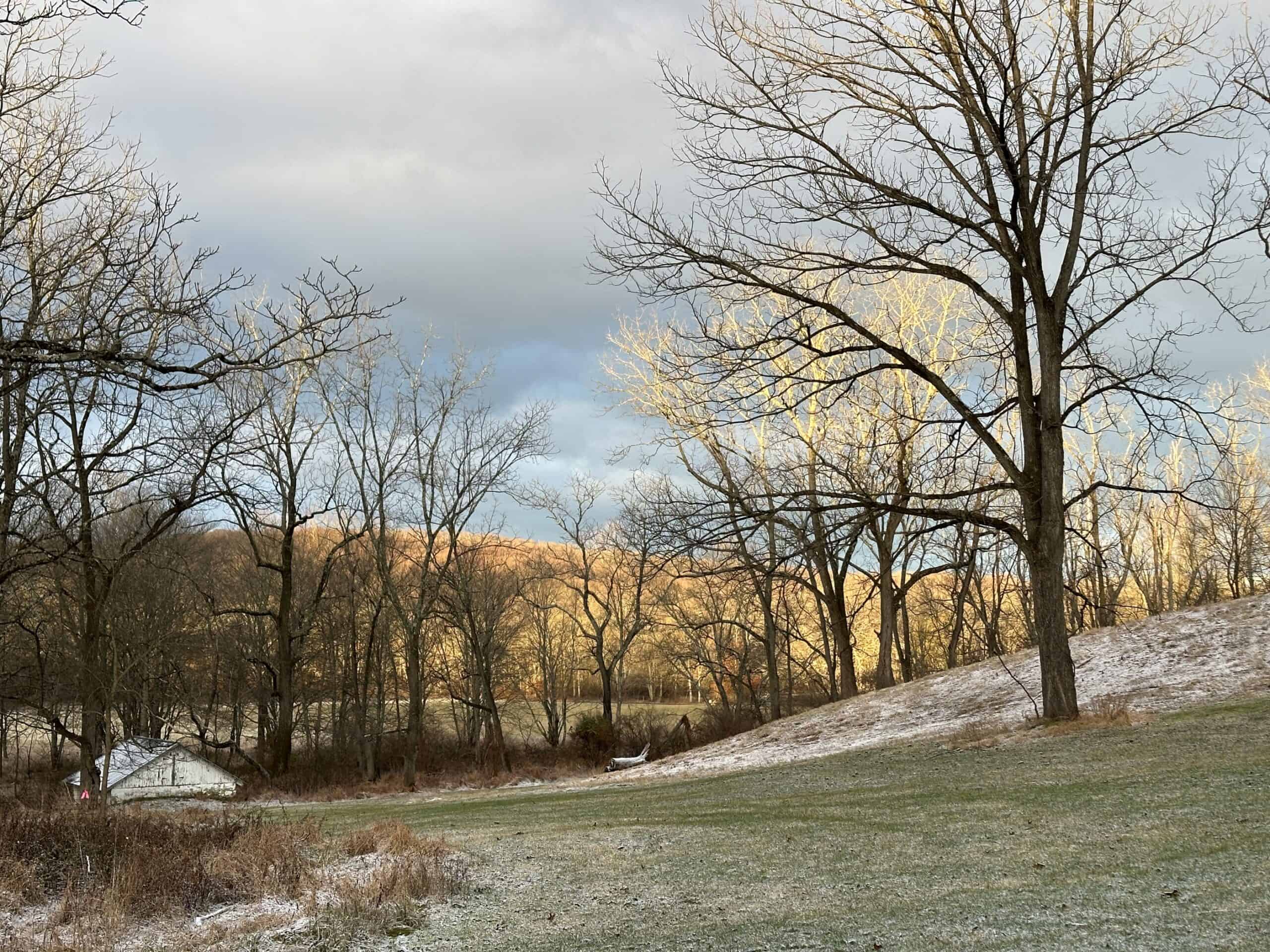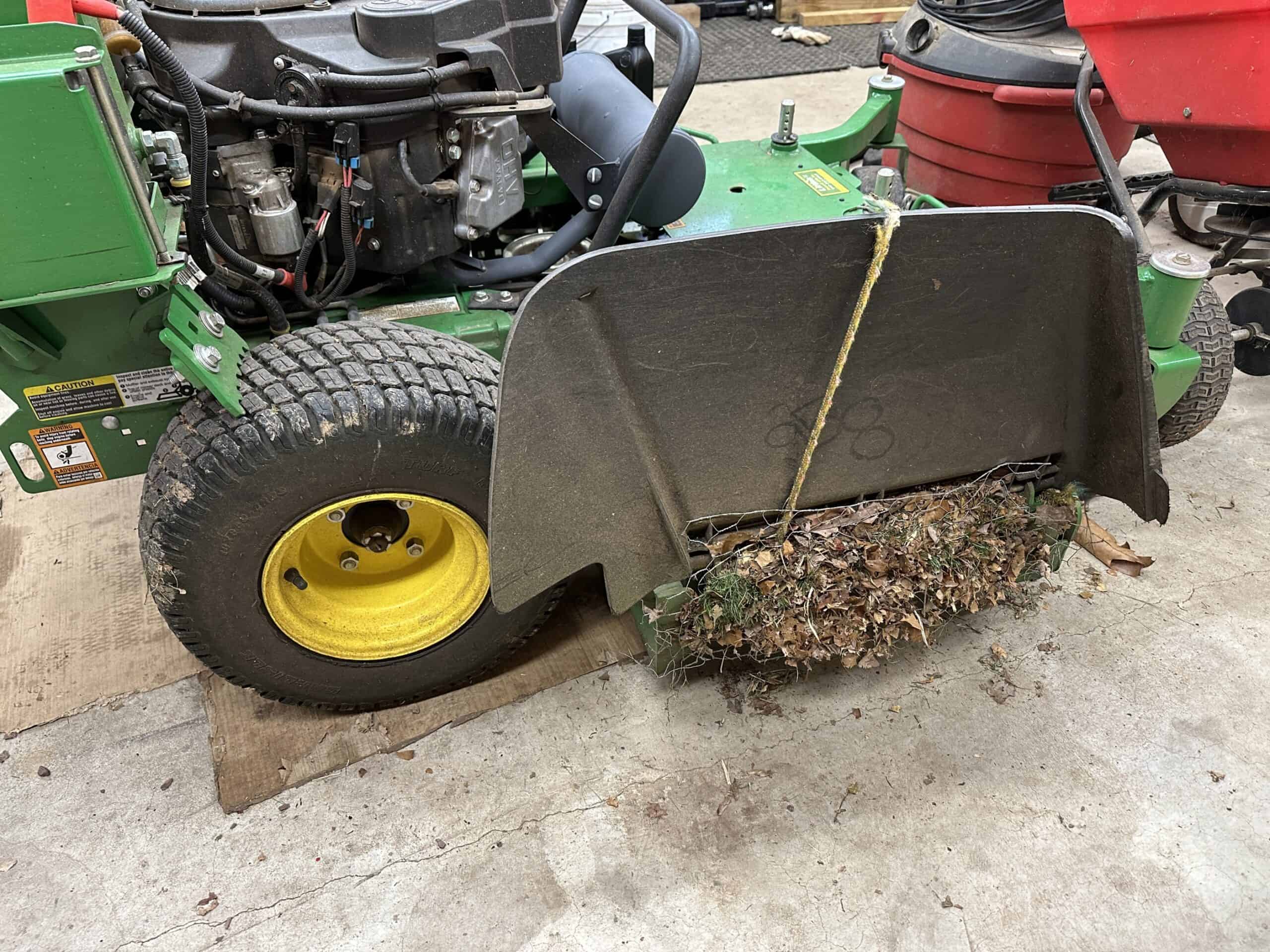Crow’s Nest: Dealing with leaves in the yard
By Daniel Barringer, Preserve Manager.

Photo: Daniel Barringer
We are fortunate in many ways, living and working on a nature preserve, surrounded by trees. People ask us, how do you deal with all the leaves the fall in the yard? Keep in mind that fallen leaves offer habitat for overwintering insects which are part of the food web upon which all life depends, but that if you “leave the leaves” on turf grass it may kill the grass underneath them. So our answer has many parts:
- We minimize the amount of yard that we maintain, keeping open areas of turf grass for play or for views (and on top of septic fields), but no more than we have to. Areas that aren’t turf don’t need to have their leaves managed.
- Some of the areas (such as the sledding slope above) we maintain as meadows, mowing just once a year. No leaf-raking is needed there.
- Leaves blow into the yard from the woods, but then most of them blow out again. Some get hung up on obstacles such as buildings, and those we rake away and put back in the woods.
- We don’t want there to be a loss of carbon, or lose the resource the leaves represent, so we never bag them, throw them away, or burn them.
- For the rest of the turf areas, when there are too many leaves to leave in place, we chop some of them up in the lawnmower. This means they won’t be as functional for insect habitat, but we don’t lose the organic matter and the grass will thrive.
How is this done? We put fencing (such as chicken wire) over the chute of the lawnmower so the leaves are trapped under the deck until they are chopped into small pieces, making a side-discharge mower into a mulching mower. This does make the mower work harder but mostly eliminates the need to further deal with leaves; it speeds up their journey from tree to soil.

Photo: Daniel Barringer
So the key to living with many trees around a home is to minimize the turf areas and figure out ways to get the leaves back to the forest floor where possible.
